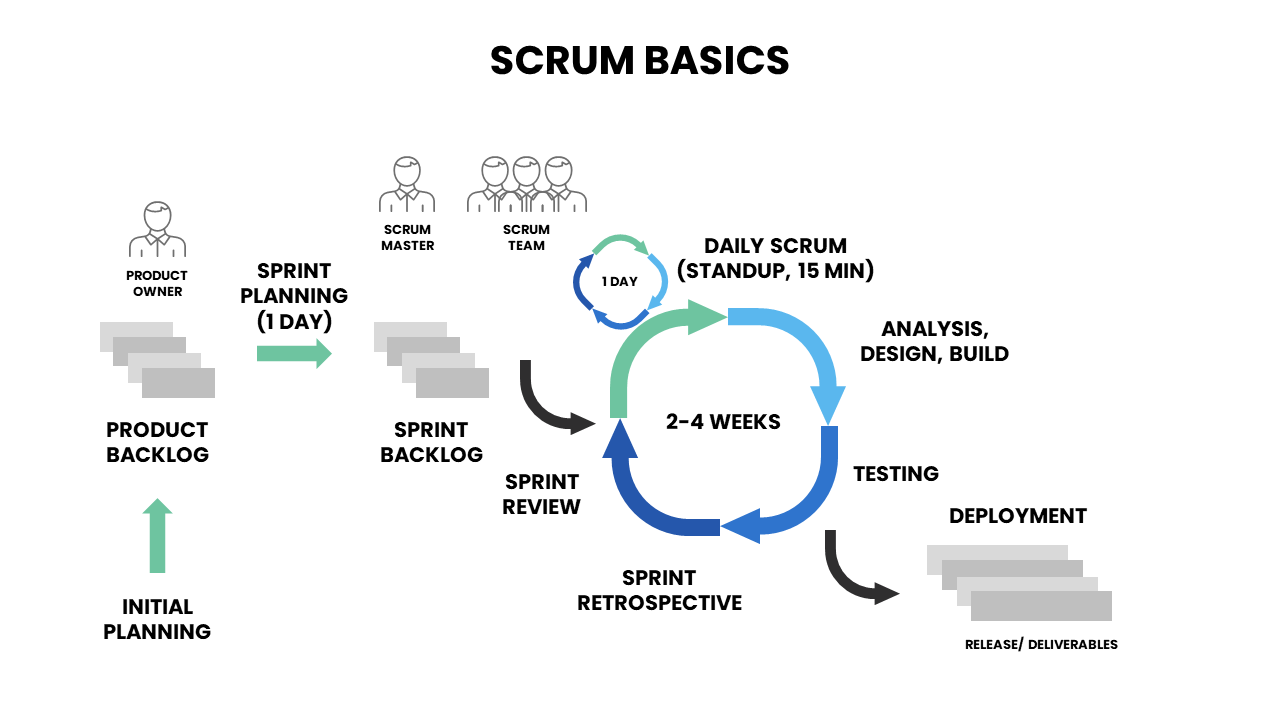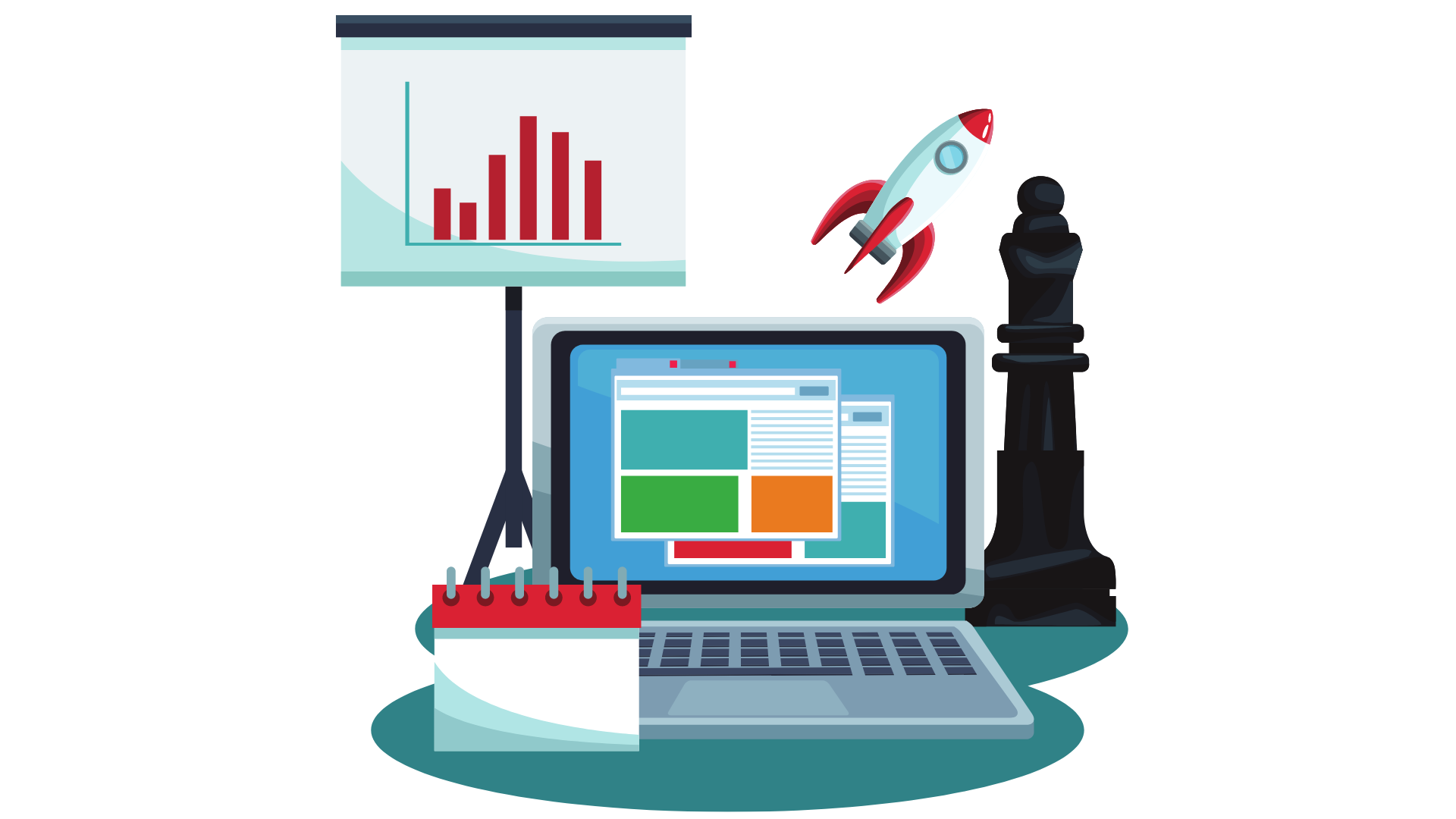What is Agile Scrum methodology for software development?
Agile Scrum is a sprint-based project management system with the goal to deliver the highest value to all stakeholders.
A key differentiation from other project management methods is the focus on delivering several iterations of a product to provide stakeholders with the highest business value in the least amount of time to maximize productivity of the team and more effectively manage the cost to deliver.
Other methods emphasize building an entire product in one iteration from start to finish that does not facilitate stakeholder interactions to quickly modify the direction of development to meet changing priorities or requirements.
This methodology provides several benefits for software development teams and ultimate the clients and digital products developed:
✓ Enables products to be built faster. A sprint establishes a set of goals that are completed in a short space of time before the next sprint is set to repeat the process.
✓ Productivity and cost effectiveness. The level of collaboration within cross functional teams is very high as frequent planning and goal setting are required throughout the process facilitating significant focus by team members to complete the sprint increasing overall productivity and reducing cost.
✓ High level of flexibility and collaboration with client stakeholders. We believe this to be one of the greatest benefits for the development team but more so for the client as feedback can be acquired after each sprint to allow decisions on the next set of work. If the client has a desire to make changes in the desired outcome or priority of certain functionality, the scrum team can easily and quickly adjust project goals in future sprints. Client satisfaction is much higher with an Agile Scrum methodology as stakeholders are very involved in the process to ensure they are getting what they want when they need it. The diagram provides a visual overview of the scrum process. The team consists of a Product Owner, Scrum Master and Software Developers.

